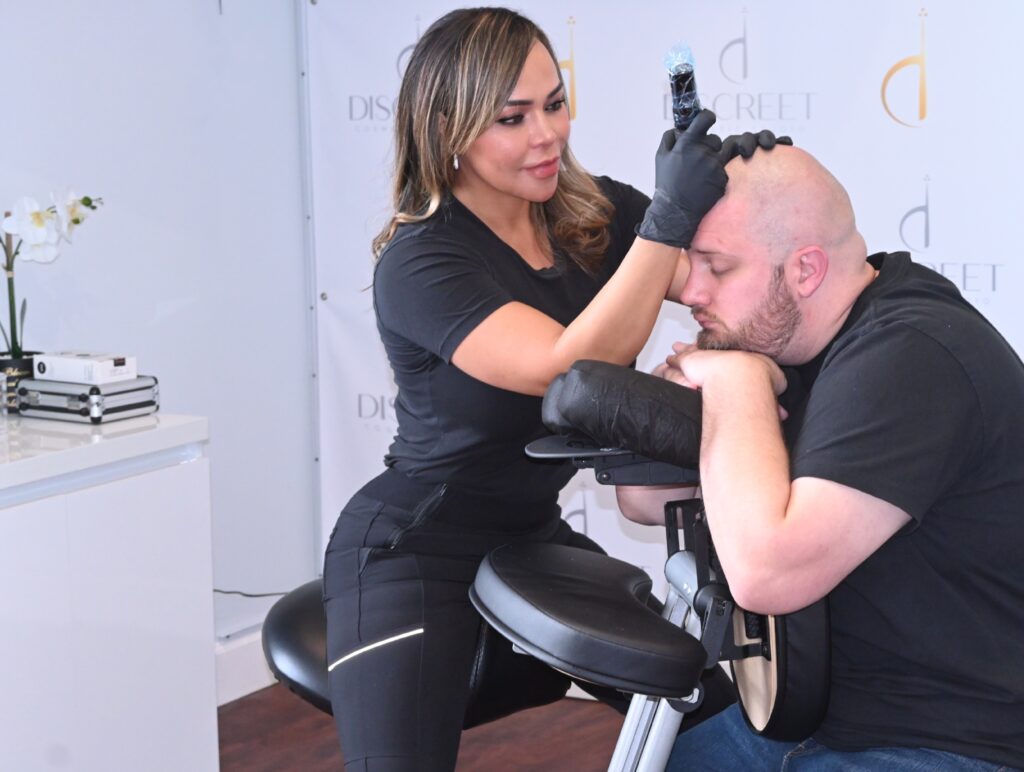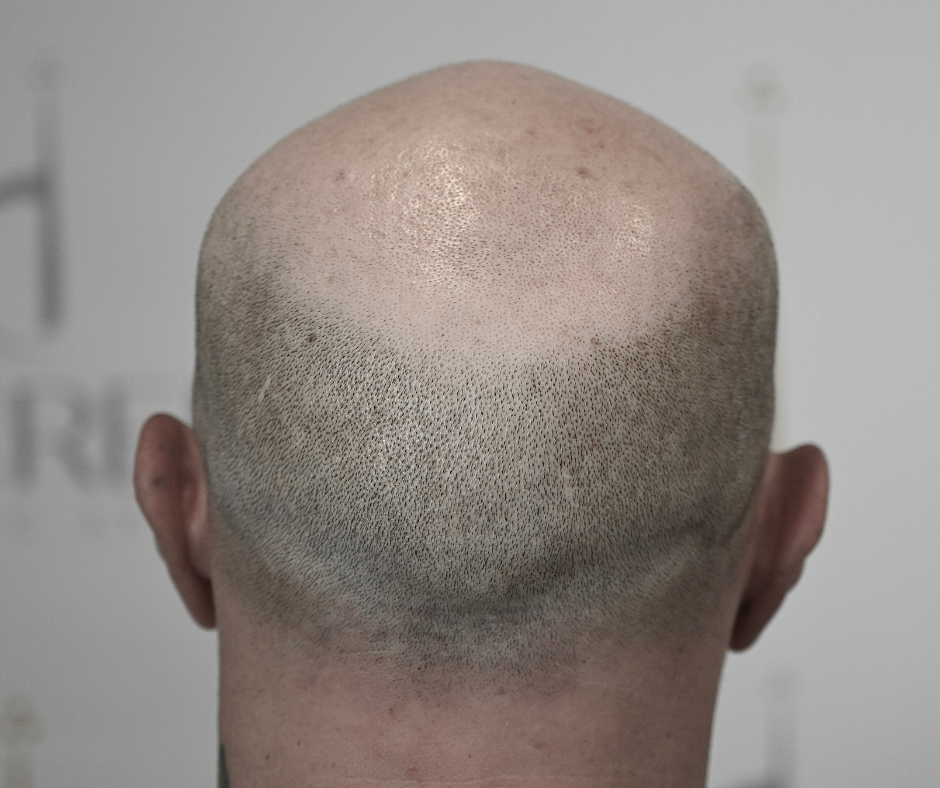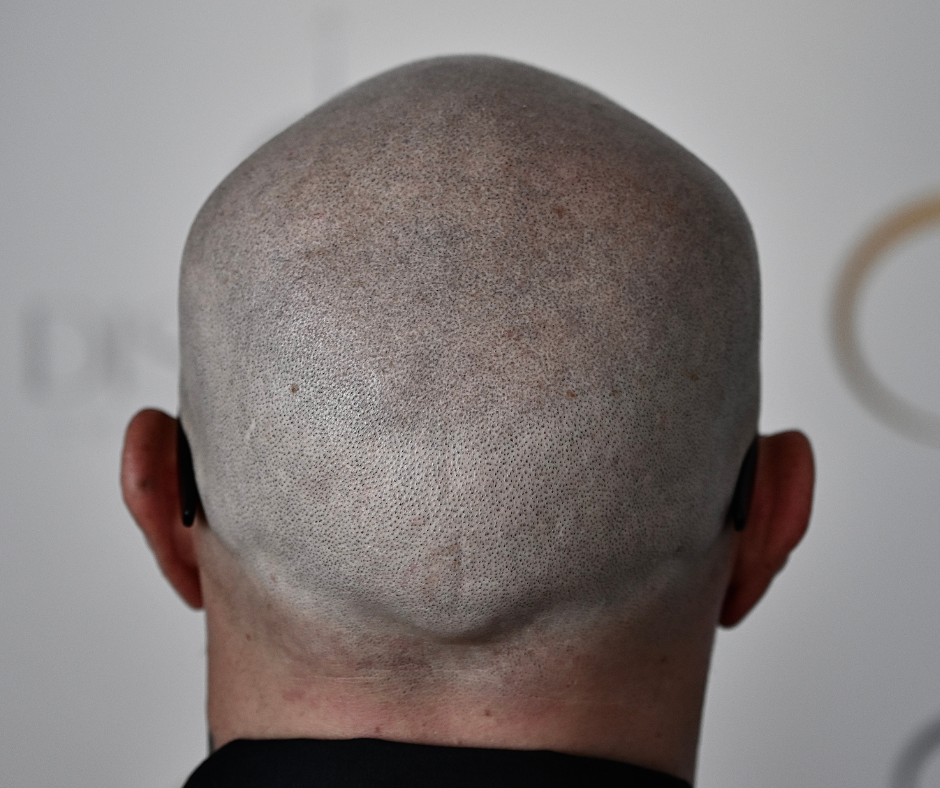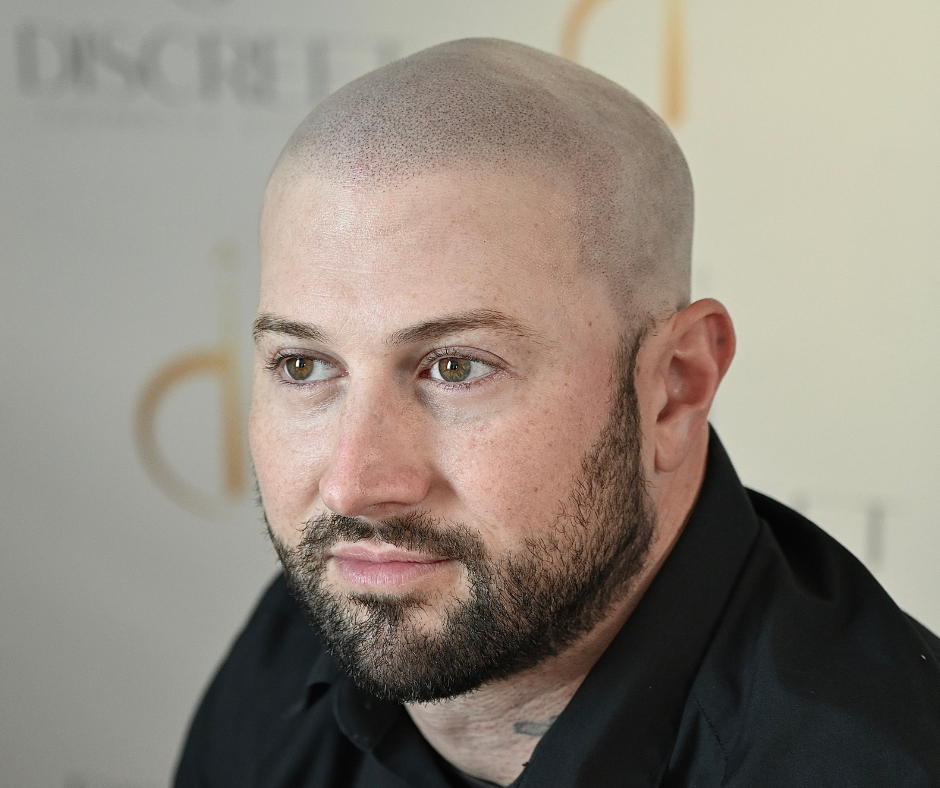Scalp Micropigmentation, SMP, is a long lasting & life changing solution
The ultimate non-surgical hair loss solution suitable for men and women of all ages, hair color and skin types.


What is Scalp micropigmentation (SMP)?
SMP is a non-surgical solution that involves the use of tiny needles to place pigment into the scalp to replicate the look of hair follicles. The result is a natural and realistic hairline that can restore confidence and self-esteem.
The procedure also offers versatility, allowing it to enhance the appearance of a shaved head, fill in bald spots, or add density to thinning hair.
Overall, scalp micropigmentation is a safe, effective, and long-lasting solution that can help individuals feel more comfortable and confident in their own skin.
This innovative hair follicle replication procedure is suitable for men and women of all ages, hair color and skin tone.
Hair Follicle Replication (HFR)
Also known as Scalp Micropigmentation (SMP), hair tattoo, or hairline tattoo, this procedure creates the appearance of hair follicles on the scalp. It involves using a specialized tattoo machine to deposit pigment into the upper layers of the skin to mimic the appearance of hair follicles.
To perform HFR, the SMP practitioner uses a small, sterile needle to deposit the pigment into the scalp at a shallow depth. The size and shape of the needle used can be varied to create different effects, such as simulating the appearance of different hair types or creating a more natural-looking hairline.
The pigment used in HFR or SMP is carefully selected to match the client’s natural hair color and skin tone. The practitioner will artfully mix a customized pigments color to create a blend that closely matches the client’s hair color, and may also adjust the pigment shade to create a 3D effect.
During the procedure, the practitioner will work carefully to ensure that the density and distribution of the impressions is consistent and natural-looking. They may also vary the depth of the needle and the amount of pressure applied to create a more realistic appearance.
The result of HFR or SMP is a natural-looking hairline and the appearance of a fuller head of hair.


Benefits of scalp micropigmentation SMP:
- 1. Non-invasive: Unlike other hair restoration methods, scalp micropigmentation is a non-surgical procedure that does not require any incisions or stitches.
- 2. No downtime:: The process of scalp micropigmentation is relatively quick and easy, and most people can return to their normal activities immediately after the procedure.
- 3. Natural-looking results: The pigments utilized in scalp micropigmentation are carefully matched to your natural hair color, resulting in a natural-looking hairline that blends seamlessly with your existing hair.
- 4. Long-lasting: Scalp micropigmentation is a long-lasting solution, with results that can last for several years with proper care.
- 5. Versatile: Scalp micropigmentation can address various hair loss issues, including bald spots, thinning hair, receding hairlines, and scalp scars.
- 6. Safe: Scalp micropigmentation is a safe procedure that does not involve any harsh chemicals or medications.
- 7. Boosts confidence: By restoring the appearance of a full head of hair, scalp micropigmentation can help to boost your confidence and self-esteem.
Scalp micropigmentation is a non-invasive cosmetic procedure that involves the use of specialized equipment to deposit pigments into the scalp. The procedure typically involves the following steps:
Scalp micropigmentation Procedure Explained:
1. Consultation: The first step in the scalp micropigmentation process is a consultation with a highly trained and qualified SMP artist.. During this consultation, the artist will assess your hair loss and discuss your desired outcome.
2. Design: The artist will work with you to design your new hairline and hair density, taking into account your natural hair color, skin tone, and facial features.
3. Preparation: the work station will be set up following the health guidelines and protocols to ensure a good and safe procedure. Before the procedure, the artist will clean and prepare your scalp.
4. Pigment application: Using a specialized micropigmentation machine, the artist will deposit small dots of pigment into the scalp. The practitioner meticulously matches the pigment to your natural hair color to create a natural-looking hairline and enhance thinning areas.
5. Finishing touches: Once the initial pigment application is complete, the SMP artist will review the results with you and make any necessary adjustments and add texture to create a more realistic appearance.
6. Aftercare: After the procedure, you will be given instructions on how to care for your scalp and how to protect your new hairline from sun exposure and other potential damage.
Overall, the scalp micropigmentation procedure typically takes 3–4 sessions, depending on the extent of hair loss and the desired outcome. Each session lasts 2-5 hours, with a few days of healing time between sessions.
Before
After

Before
After

Scalp micropigmentation Clean Protocol
The SMP (scalp micropigmentation) clean protocol is a set of guidelines that technicians follow to ensure a safe and successful procedure.
Key steps involved in implementing the SMP clean protocol:
1. Sterilization: All equipment and materials used during the procedure must be properly sterilized to prevent the spread of infection. This includes tattoo machine and other tools.
2. Disposable items: Items that cannot be sterilized, such as needles, gloves, pigment cups, should be disposed of after each use.
3. Hand hygiene: The technician should wash their hands thoroughly with soap and water before and after the procedure.
4. Surface cleaning: The work area should be cleaned and disinfected before and after each procedure.
5. Use of barrier protection: The technician should wear gloves, a mask, and a disposable apron to protect themselves and the client.
6. Pigment mixing: Pigment should be mixed in a clean, sterile environment using disposable cups and
mixers.
7. Waste disposal: All waste generated during the procedure should be disposed of properly, following local regulations.
Following the SMP clean protocol helps to minimize the risk of infection and ensures a safe and successful procedure for the client.

How Did SMP Start?
Scalp micropigmentation (SMP) is a relatively new cosmetic procedure that has gained popularity in recent years. The technique originated in the early 2000s and initially served to craft a more natural-looking hairline for those who had undergone hair transplant surgery.
The first SMP practitioners were typically tattoo artists who adapted their skills to the unique requirements of scalp micropigmentation. The technique involves using a specialized tattoo machine and pigment to replicate the appearance of hair follicles on the scalp. The practitioner carefully matches the pigment to the client’s hair color and skin tone to achieve a seamless and natural-looking result.
As the technique gained popularity, specialized SMP clinics and training programs emerged, broadening its applications. Today, people use SMP not only to address hair loss but also to camouflage scars, reconstruct eyebrows, and replicate a closely shaved head appearance.
As the demand for SMP continues to grow, so too does the innovation in the field. Constant development of new techniques, equipment, and pigments aims to enhance procedure safety and effectiveness, guaranteeing optimal results for clients.
Get a Complimentary Consultation

